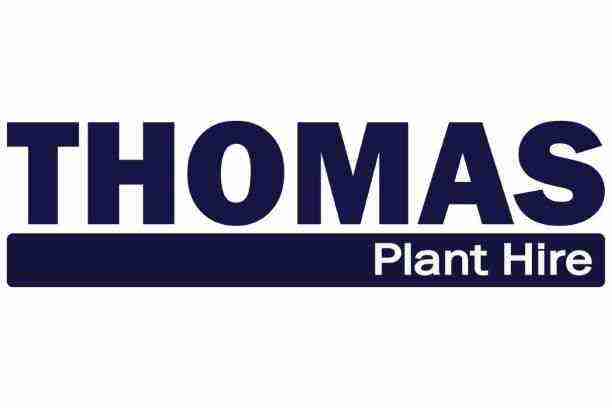Title Page
-
Toolbox Number
-
Site conducted
-
Conducted on
-
Prepared by
-
Location
Fitness for Work and Complacency
-
Introduction Into Situational Awareness:
Situational awareness is an on-the-job safety skill that is critical for hazard identification, effective decision making, and accident prevention. There are a lot of different contributors to situational awareness and in this training, we look at these different contributors alongside reinforcing fatigue which is one of the main issues that can affect situational awareness.
So what does situational awareness mean?
Situational Awareness means paying attention and being aware of what’s going on around you. No matter what your role is at work, situational awareness is an important key to keeping everyone safe.
When you practice situational awareness at work, you remain alert and aware of things like:
where your co-workers are while they are working and what they are doing
where operational heavy equipment is and how it is moving
where you are supposed to be
what sounds you hear
what potential hazards are nearby
what you are supposed to be doing
what are the safe procedures for the tasks you are completing
what changes are happening that might affect your actions
what is going on above and behind you
what unusual smells are in the air
what do you see that is out of the ordinary
what is the weather like, if you are working outdoors
Situational awareness involves three elements which are observation, comprehension, and anticipation.
1. You observe what is happening around you and take in all the elements of your environment.
2. You comprehend the situation you are experiencing.
3. You anticipate what is likely to occur next based on what you understand to be happening now.
There are many factors that will reduce situational awareness that workers must be aware of and make an effort to avoid, including:
Rushing through a task
Mental or physical fatigue
Complacency
Poor communication
Distractions
Daydreaming, loss of focus
Stress
Situational awareness is something that should be happening all the time, throughout the workday. But there may be times when you should increase awareness of your surroundings and your actions, for example, when:
starting new or non-routine tasks
working with new co-workers
visitors are at the work site
the work environment may have changed
there is high stress, or a high workload situation
you have a gut reaction that something may be off
beginning work on a project, even if you have performed the tasks before
high hazard operations are taking place (examples: near electrical, at heights, in confined spaces)
Think about some specific examples of what situational awareness may look like on the job...
Not walking into the “line of fire” when other workers nearby are using tools or equipment.
Noticing that a co-worker forgot to put on PPE or missed a safety step and speaking up to ensure they follow the correct procedure.
Stopping a task to make adjustments that will get the job done safe and efficiently.
Correcting hazards on the spot if you notice something that can be fixed immediately.
Reporting hazard observations and near miss incidents to management.
Just looking around from time to time is not enough. At all times you must have an increased awareness of what is going on around you so if conditions change, you can respond quickly, communicate effectively, and avoid the risk of injury or damage.
When things are running smoothly, there may be a relaxed awareness as everyone completes their work tasks safely and efficiently. As situations change throughout the day, some find a simple trick known as the SLAM method to be helpful at promoting situational awareness.
STOP - Think before you act. Consider the task and make sure you understand what needs to be done.
LOOK - Carefully observe the work area to find potential hazards.
ASSESS - Evaluate the hazards and make sure you have the proper tools, training, and PPE to be safe.
MANAGE - Make changes, ask questions, and take the actions you need to continue to work safely.
There are many safety tips workers can practice to increase situational awareness.
Pay attention to what is going on all around you, including above, to the sides, and also behind you and then create a habit of regularly assessing the tasks you are doing and your work environment.
Acknowledge cues you are getting from your co-workers, which may be verbal, emotional, or physical and also observe all warning, danger, and information signs – they are posted for a reason.
Be proactive when it comes to communicating with your supervisor and co-workers. Ask for assistance if you need it, or if it could be helpful.
Understand the pace of the work environment. Watch for unexpected scenarios and adjust accordingly.
Ensure complacency is not creeping into the workday. Avoid using electronic devices including cell phones and headphones. Prevent fatigue by maintaining a consistent sleep schedule.
Introduction Into Fatigue:
Fatigue is a serious issue in the traffic control industry. Long hours, exposure to harsh weather conditions, and constant vigilance can lead to mental and physical exhaustion. In Australia, managing fatigue is essential for safety on the job site, compliance with regulations, and ensuring the well-being of traffic controllers.
What is Fatigue?
Fatigue is a state of physical and mental exhaustion that reduces a person’s ability to perform tasks safely and effectively. It can impair reaction times, decision-making, and concentration—all critical for traffic controllers.
Signs of Fatigue
Yawning or heavy eyelids
Difficulty concentrating or zoning out
Slower reaction times
Poor decision-making
Irritability or mood changes
Physical exhaustion
Risks of Fatigue on Site
Increased likelihood of accidents or near-misses
Reduced ability to communicate effectively
Poor hazard recognition
Greater risk to the safety of road users and site workers
Legal and Safety Requirements in Queensland
Adhere to fatigue management guidelines under Queensland Workplace Health and Safety regulations.
Follow the maximum allowable work hours and minimum rest breaks as per employment agreements.
Supervisors must monitor workers for signs of fatigue and take immediate action if fatigue is detected.
Managing Fatigue
1. Scheduling and Planning
Rotate shifts to avoid excessive consecutive workdays.
Plan for adequate rest breaks throughout shifts.
Schedule high-risk tasks during less fatiguing times of the day.
2. Break Management
Follow the recommended break schedules:
Standard Breaks: 15-minute rest after every 2 hours of work or a change in duties.
Meal Breaks: 30-minute unpaid meal break for shifts longer than 5 hours.
Extended Shifts: Additional breaks for shifts exceeding 9.5 hours.
3. Personal Fatigue Management Tips
Get 7-9 hours of sleep before shifts.
Stay hydrated and eat nutritious meals.
Avoid heavy meals, caffeine, and sugary snacks before or during shifts.
Use rest breaks to move around and refresh yourself.
4. Employer Responsibilities
Monitor and enforce compliance with fatigue management policies.
Provide shaded rest areas and access to water.
Encourage open communication about fatigue.
Train workers on recognizing and managing fatigue.
Additional Safety Concerns/Talks
-
Please note any additional topics discussed
Attendance Log
-
Each present team member to sign name and signature acknowledging attendance at this meeting
Team Member
-
Name & Signature








